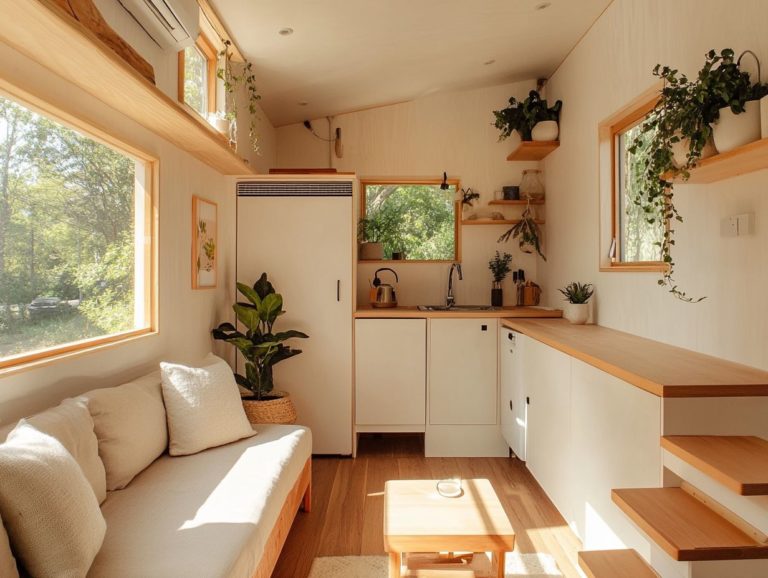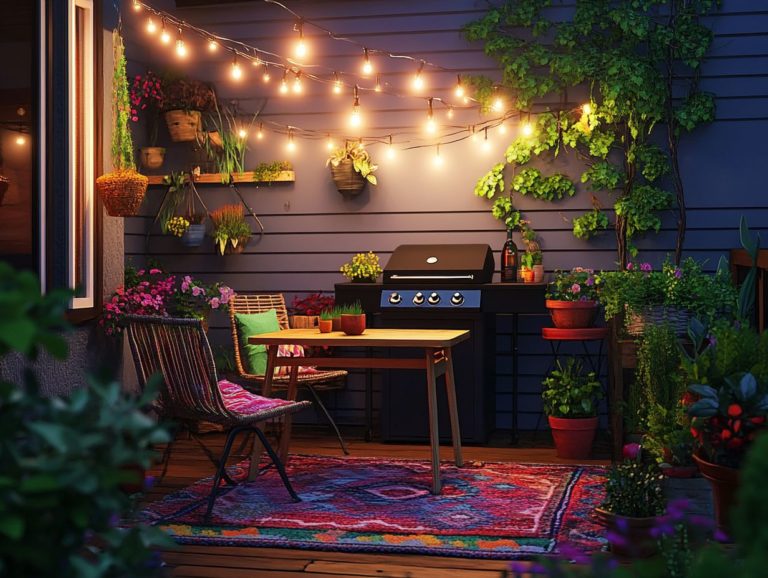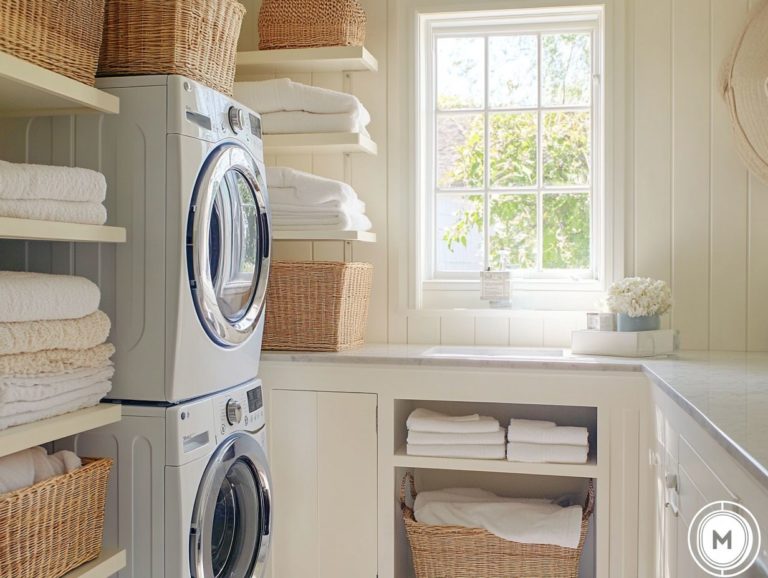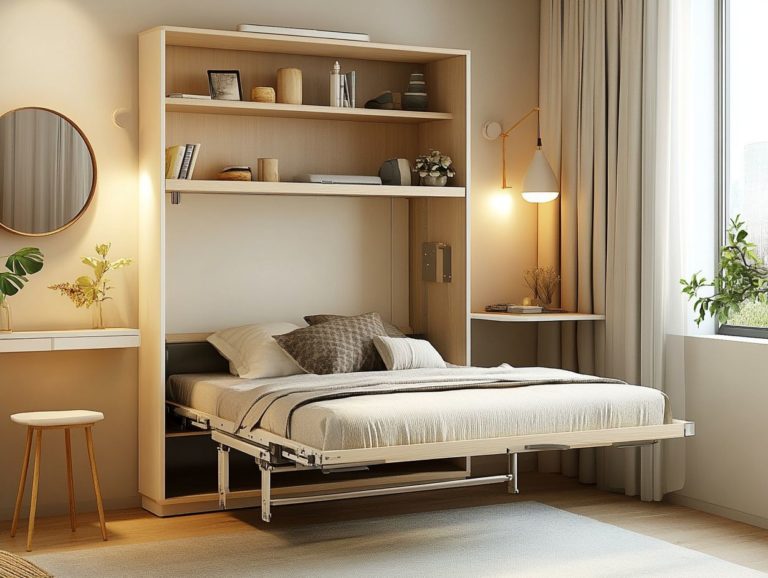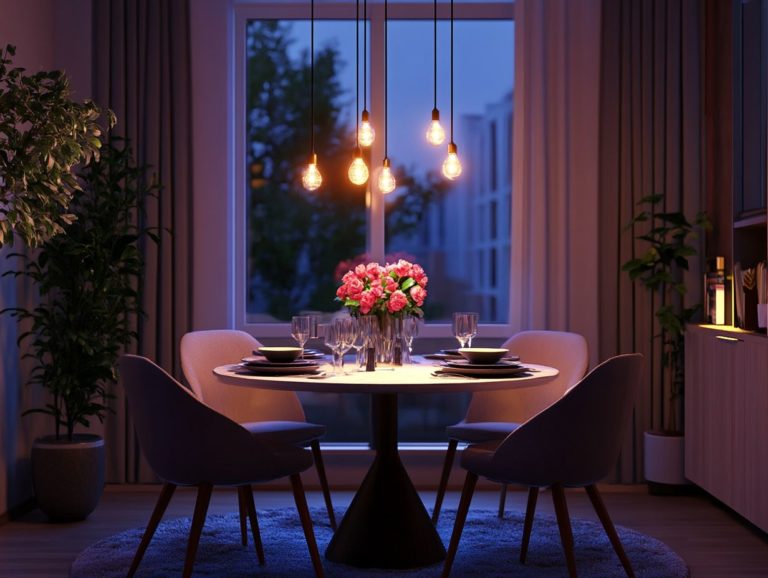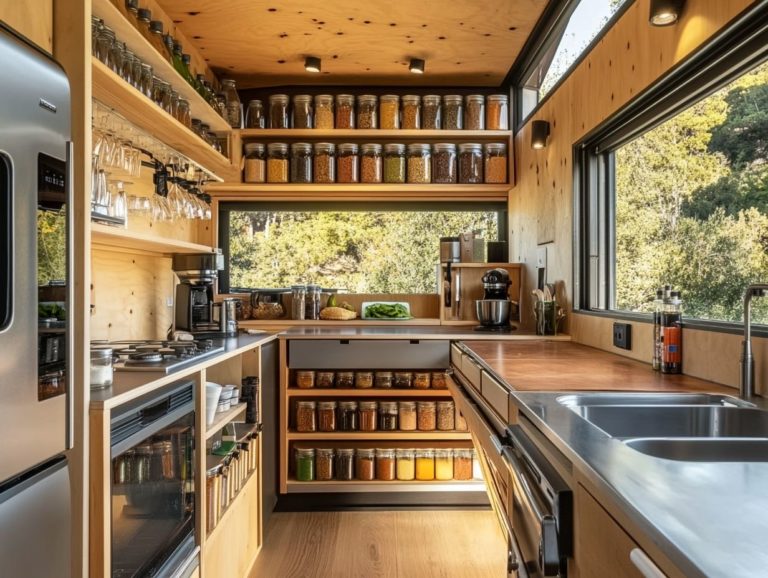7 Creative Ways to Partition Tiny Spaces
In the quest to maximize tight spaces, clever partitioning can elevate a cramped area into a functional and stylish haven. Incorporating creative ideas, such as room dividers, can make a significant difference.
This article delves into seven innovative techniques that define distinct zones and enhance your living experience. From floating shelves to sliding doors, these methods provide stylish separation and privacy solutions.
Discover how to use curtains, bookcases, and mirrors to create the illusion of space while maintaining flexibility. These ideas are perfect for small apartments and designer solutions.
Whether your goal is to optimize storage or improve aesthetics, these creative strategies will inspire you to embrace the potential of your limited square footage. Transform your home decor into a cozy environment.
Contents
- Key Takeaways:
- 1. Use Vertical Space with Floating Shelves
- 2. Use Curtains as Dividers
- 3. Create a Room within a Room with a Bookcase
- 4. Use Folding Screens for Flexibility
- 5. Install Sliding Doors for a Space-Saving Solution
- 6. Incorporate Mirrors to Create the Illusion of Space
- 7. Utilize Furniture as Dividers
- Unlock the Potential of Your Tiny Space Today!
- What Are the Benefits of Using Creative Partitioning Techniques?
- How Can One Determine the Best Partitioning Method for Their Space?
- What Are the Common Mistakes to Avoid When Partitioning Tiny Spaces?
- How Can One Make the Most of Limited Space with Partitioning?
- What Are Some Creative Ways to Incorporate Storage into Partitioning?
- Frequently Asked Questions
Key Takeaways:
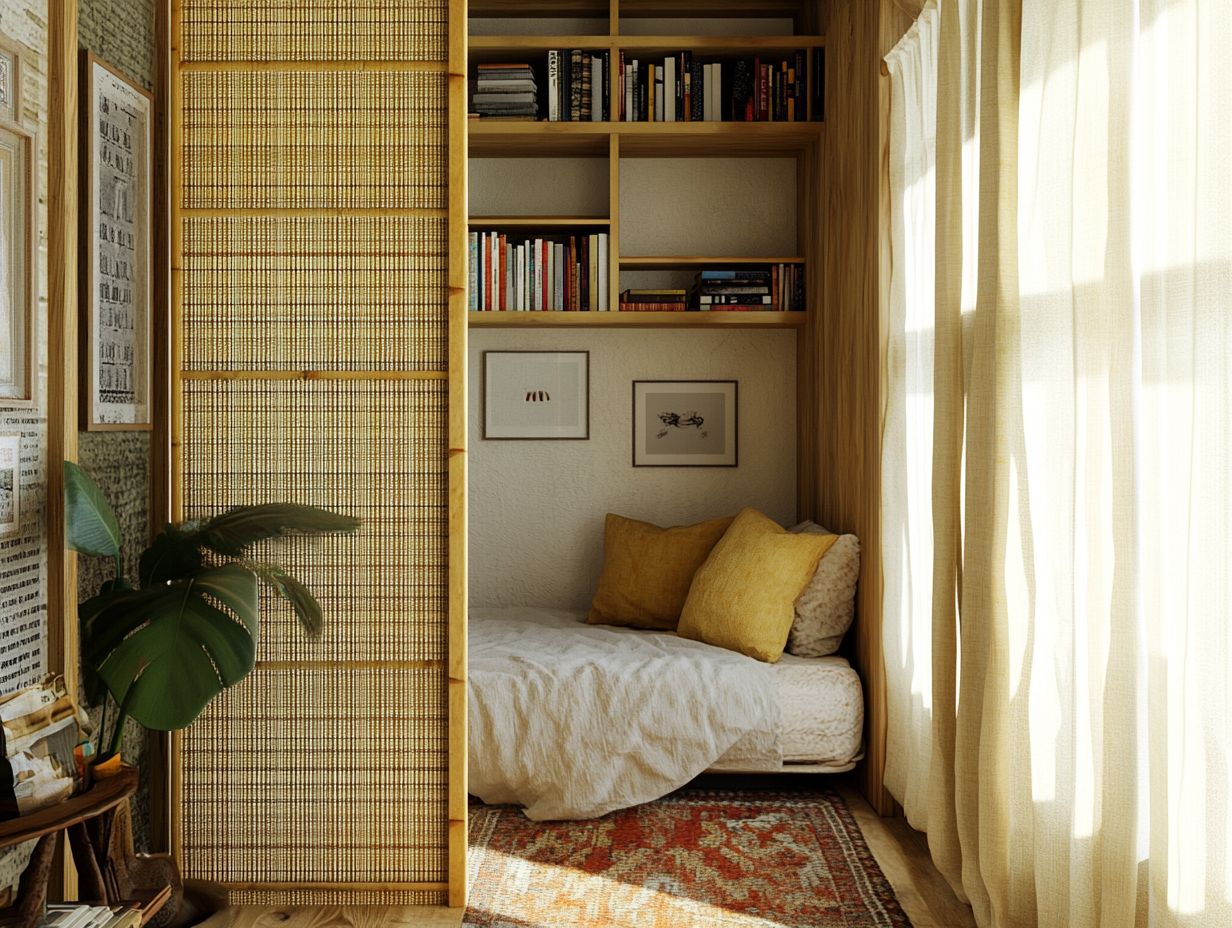
- Use vertical space with floating shelves for storage and to divide small areas.
- Curtains provide flexible dividers for privacy without major renovations.
- A bookcase can create a cozy nook while displaying your favorite items.
1. Use Vertical Space with Floating Shelves
In modern spaces, you can enhance storage and aesthetics. Use vertical space with floating shelves.
These shelves serve as functional decor elements that define your space, allowing you to beautifully showcase personal items and indoor plants.
Their sleek design fosters a simple, clutter-free look, making smaller areas feel more open and inviting. To maximize their potential, place these shelves above furniture like a sofa or desk for easy access while drawing the eye upward.
With materials such as wood, glass, or metal, you can introduce a variety of textures to your interior. Select options that complement your existing decor. Pairing floating shelves with vibrant indoor plants or carefully curated decorative items accentuates individual pieces and creates a cohesive and welcoming atmosphere.
2. Use Curtains as Dividers
Curtains offer an elegant and flexible way to establish visual boundaries in your home. They provide stylish separation that enhances privacy while seamlessly contributing to the room’s overall decor.
These soft barriers are easy to install, making them accessible for anyone eager to transform their living space without extensive renovations. With an array of styles and fabrics available, curtains cater to diverse design themes from contemporary chic to rustic charm.
This versatility allows you to match them with your existing decor or make a bold statement. Choosing from various lengths, textures, and patterns ensures that curtains serve a practical purpose while elevating the aesthetic value of your space.
3. Create a Room within a Room with a Bookcase
A bookcase can serve as an exceptional room divider, creating a cozy reading nook or an intimate space within a larger area. It enhances the definition of your space while aligning perfectly with modern interior trends that value both functionality and design inspiration.
These multifunctional pieces do more than just separate spaces; they display your favorite books, plants, and decorative items. Imagine styling your bookshelf with a mix of colorful spines and artistic sculptures, merging utility with aesthetic charm.
Adding lighting, like fairy lights or small lamps atop the shelves, can elevate the ambiance, transforming your bookcase into a warm, inviting feature. Layer in textures think woven baskets for storage or framed photos tucked between your favorite books to infuse warmth and personality. This way, your bookcase isn’t merely a partition; it becomes a captivating focal point in any room.
4. Use Folding Screens for Flexibility
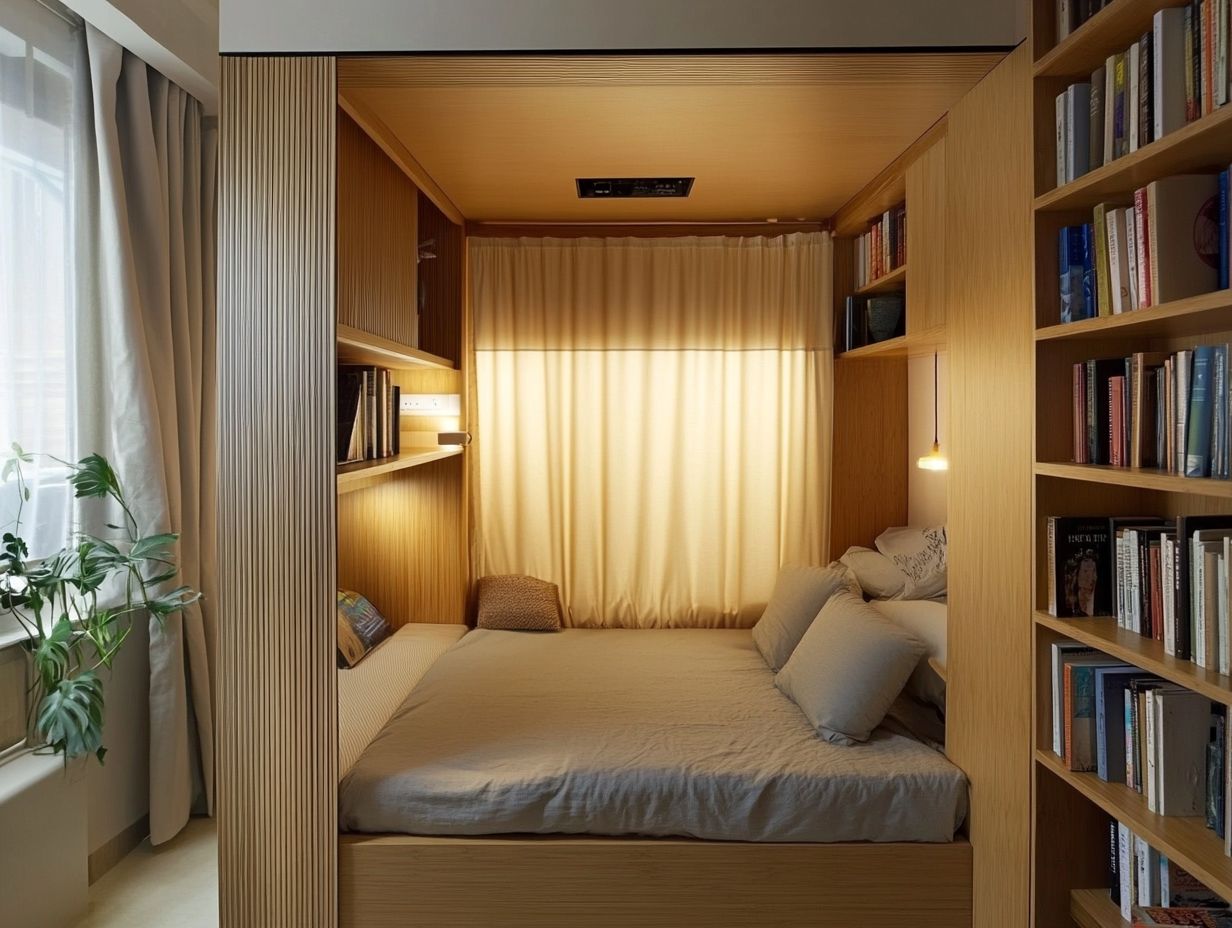
Folding screens present an elegant solution for room separation. They offer you the flexibility to define your spaces and make quick adjustments to your decor. This is especially useful in collaborative spaces or chic rooms that thrive on dynamic layouts, serving as functional dividers.
These versatile pieces do more than just divide a room; they add artistic flair to your space. Their portability allows for effortless rearrangement of both indoor and outdoor setups, sparing you the trouble of dealing with bulky furniture and promoting a unique look that reflects your personal style.
With an array of styles at your fingertips from traditional Asian designs featuring intricate woodwork to sleek, modern minimalist options crafted from lightweight materials like fabric or metal you ll discover the perfect folding screen that transforms your space while meeting practical needs like privacy or clutter concealment.
5. Install Sliding Doors for a Space-Saving Solution
Installing sliding doors in your home can truly transform your space. They provide a sleek, space-saving solution that beautifully divides rooms. These doors allow for a seamless transition between areas, enhancing both visual boundaries and functionality, making them ideal for home offices.
These versatile doors eliminate the need for traditional swing space, making them perfect for smaller rooms and cozy studios. You ll find a variety of design options that can seamlessly match your unique interior style. Whether you opt for glass, wood, or aluminum, each material adds a distinct touch to your decor.
Sliding doors also enhance the flow of natural light. They make your spaces feel more open and airy. Whether you lean towards a modern minimalist aesthetic or a cozy rustic vibe, these doors elevate both the visual appeal and practical usability of contemporary living environments.
6. Incorporate Mirrors to Create the Illusion of Space
Incorporating mirrors into your interior design isn t just about enhancing decor; it creates an illusion of space that makes your areas feel larger and more welcoming. It maximizes natural light while elevating your home s aesthetic.
When you strategically place mirrors, you can amplify natural light. This transforms dim or cramped spaces into vibrant, airy environments. For instance, positioning a large mirror opposite a window effectively reflects sunlight throughout the room, brightening it significantly and introducing a cozy environment.
Mirrors can also serve as artistic focal points that complement a variety of decor styles, from modern minimalism to vintage charm. They provide a unique design element. When selecting your mirror styles, think about your existing color palette and furnishings. A sleek, frameless design may perfectly suit contemporary interiors, while a richly detailed, ornate frame could enhance a more traditional setting.
Master these design principles to effortlessly create stunning spaces!
7. Utilize Furniture as Dividers
Utilizing furniture as dividers is a sophisticated design approach that enhances the definition of your spaces. It introduces a touch of eclectic charm and stylish room arrangement. This technique allows you to create functional dividers that serve both practical and aesthetic purposes throughout your home.
Incorporating various furniture types, such as open bookshelves, can elegantly separate your living room from the dining area. They simultaneously provide essential storage and showcase your cherished personal items. Strategically placing sofas with their backs facing one area effectively defines spaces without creating a sense of enclosure. For more ideas on maximizing your space, check out our guide on creating flexible spaces in tiny homes.
Tall plants can also work wonders as natural dividers, infusing life into the room while creating delightful visual breaks. They are ideal for a cozy studio. As you arrange these pieces, keep balance and flow in mind; positioning softer furniture near vibrant accents can enhance the overall appeal and maximize the functionality of each area. For more ideas, check out these 7 tips for decluttering tiny spaces.
Unlock the Potential of Your Tiny Space Today!
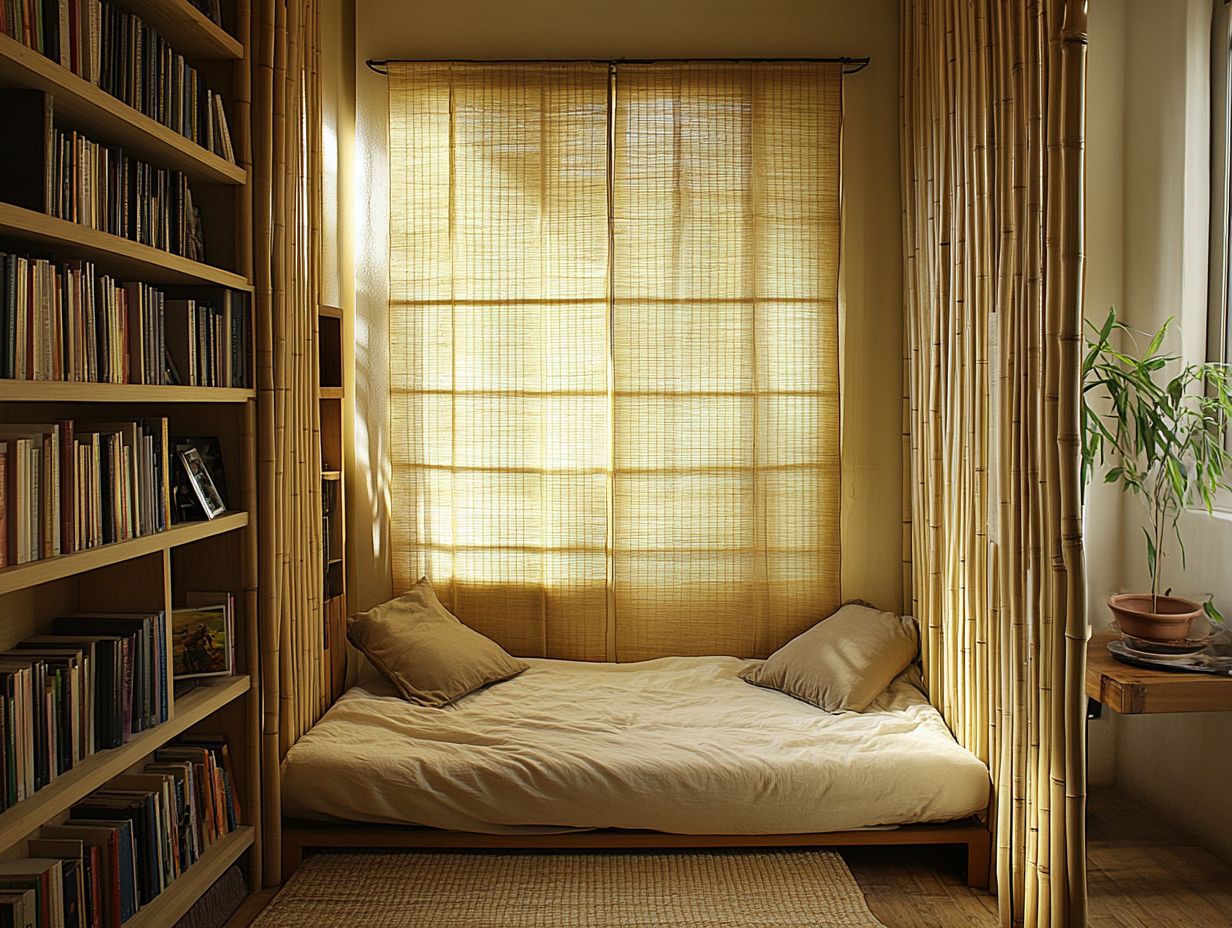
Partitioning is more than just a clever trick; it s a strategic approach that can truly maximize your limited spaces. By defining areas and making the space work better, you can incorporate space-saving solutions like glass separators that elevate your interior design into something more organized and visually appealing.
You have a range of creative partition ideas for tiny house spaces at your disposal, each tailored to meet your specific needs. Consider sliding doors to create flexible boundaries or open shelving that maintains an airy feel while providing much-needed storage. For instance, using curtains in a studio apartment can seamlessly separate your living and sleeping areas, offering privacy without the commitment of permanent structures.
Incorporating glass partitions can brighten your space, creating the illusion of a larger area. They also keep distinct zones intact. For those living in tiny homes, exploring creative ways to use vertical space can enhance home aesthetics. Foldable or modular partition systems offer a versatile solution, allowing you to adapt your environment dynamically to suit your ever-changing lifestyle.
What Are the Benefits of Using Creative Partitioning Techniques?
The benefits of employing creative partitioning techniques go far beyond simple separation. They can redefine how you perceive space, cultivate a warm and inviting atmosphere, and align with contemporary interior trends that emphasize both aesthetics and functionality.
By incorporating elements such as decorative screens, shelving units, or plants, you enhance privacy while simultaneously elevating organization. A clever arrangement of bookcases can create designated reading nooks that feel both personal and welcoming. For those looking to maximize their space, consider these decorating tips for small tiny house spaces. Using translucent dividers allows you to maintain an open ambiance while still delineating areas for various activities, such as work and relaxation.
This thoughtful approach boosts functionality and enriches the overall aesthetics of your space, making it visually appealing and harmonious. Ultimately, these design strategies for tiny house living spaces can transform any room into a meticulously organized haven that reflects your personal style.
How Can One Determine the Best Partitioning Method for Their Space?
Determining the best partitioning method for your space involves a careful assessment of your specific needs for defining areas and ensuring functionality while maintaining style. Select an approach that complements your interior decor and effectively achieves the desired room separation.
If your room is small and you wish to keep it feeling airy, lightweight screens or sheer curtains can provide essential visual separation without overwhelming the space. Conversely, in larger areas like an open office or family room, consider opting for solid partitions or shelving units that offer both privacy and practical storage solutions. For more tips, check out this guide on how to create open spaces in a tiny house.
Know what you want the area for relaxation, work, or entertaining. This will help you decide on the right partitioning method. Successful implementations, like sleek glass dividers in modern offices or strategically placed bookshelves in cozy reading nooks, showcase how thoughtful partitioning can enhance functionality while maintaining a cohesive aesthetic throughout your home. For more ideas, check out our guide on how to use space dividers in tiny homes.
What Are the Common Mistakes to Avoid When Partitioning Tiny Spaces?
When partitioning tiny spaces, it’s essential to sidestep common mistakes that can compromise both function and aesthetic appeal. Avoiding these pitfalls is vital for achieving effective room separation while maintaining harmony in your home decor.
Many individuals tend to over-complicate their designs, cramming in too many partitions or opting for overly intricate layouts that disrupt the flow of the space. For inspiration on simpler, more functional designs, consider 7 ways to create a multi-functional tiny home. Ignoring the importance of natural light can also result in dim, uninviting environments.
To avoid these challenges, thoughtful planning is key. Start by assessing the purpose of each area and how they will interact, ensuring there are open lines of sight and light. Embrace simple, sleek designs, and consider strategically placing mirrors to amplify light, making even the coziest corners feel larger and more inviting.
Start thinking creatively about how you can partition your spaces today!
How Can One Make the Most of Limited Space with Partitioning?
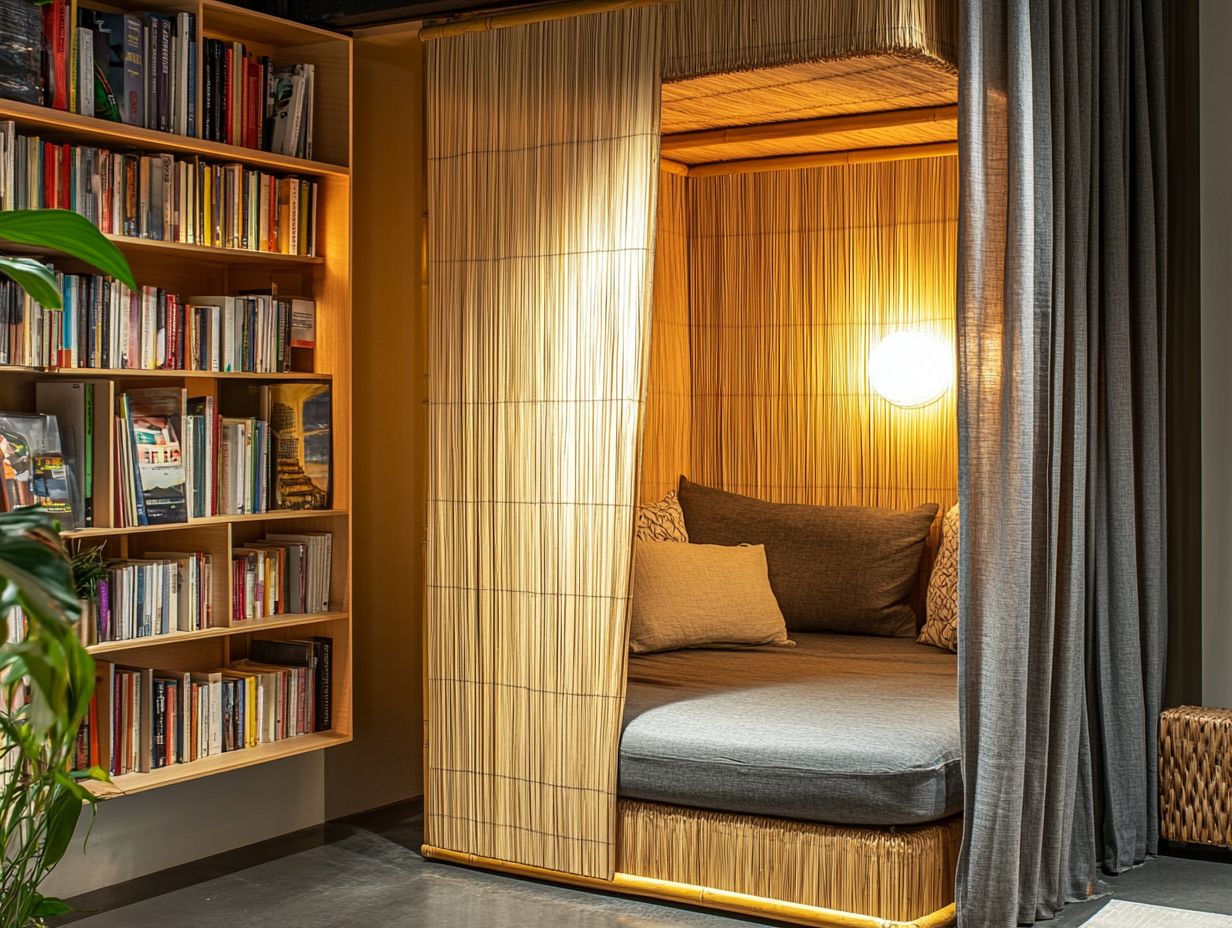
Making the most of limited space through room dividers means you can creatively use space-saving solutions to enhance a cozy atmosphere while ensuring each area serves its purpose.
By incorporating multi-functional furniture, like a stylish sofa bed or an ottoman that doubles as storage, you can optimize available space without sacrificing style or comfort.
Utilizing vertical solutions, such as shelves and wall-mounted organizers, allows you to take full advantage of your room’s height. Transform your walls into practical storage it’s easier than you think!
Opting for light colors on your walls and furnishings creates an illusion of openness that makes the area feel larger and more inviting.
These strategies maximize your space and cultivate a harmonious and efficient living environment.
What Are Some Creative Ways to Incorporate Storage into Partitioning?
Incorporating storage into your partitioning can be achieved through innovative methods that transform room dividers into elegant pieces of home furnishings, enhancing both organization and aesthetics.
Consider designs that feature open shelves seamlessly integrated into bookcases. This allows for easy access to your favorite reads and decorative items while clearly defining different living areas. Exploring innovative shelving ideas for small spaces can also enhance functionality. Additionally, storage ottomans can serve as versatile dividers, offering cozy seating while cleverly hiding away blankets, toys, or other miscellaneous items.
This approach not only maximizes your space but also fosters a more organized environment, enabling each element to work harder without sacrificing style. Embrace such solutions to create a harmonious blend of form and function that reflects your personal taste and lifestyle.
Frequently Asked Questions
What are 7 creative ways to partition tiny spaces?
- Hanging curtains: Use sheer curtains to divide a small space and create a sense of separation.
- Bookshelf divider: Position a tall bookshelf to serve as a partition and provide extra storage.
- Folding screens: These versatile screens can be easily moved and can serve as a decorative element.
- Plants: Use indoor plants to create a natural and functional partition in a small space.
- Sliding doors: Install sliding doors to separate different areas while allowing for flexibility and natural light.
- Room dividers: A room divider can be a functional and stylish way to section off a small space and also serve as a decorative statement piece.
- Hanging shelves: Utilize vertical space by hanging shelves to create a partition and provide additional storage.
Try these strategies today and transform your space into a stylish haven!

